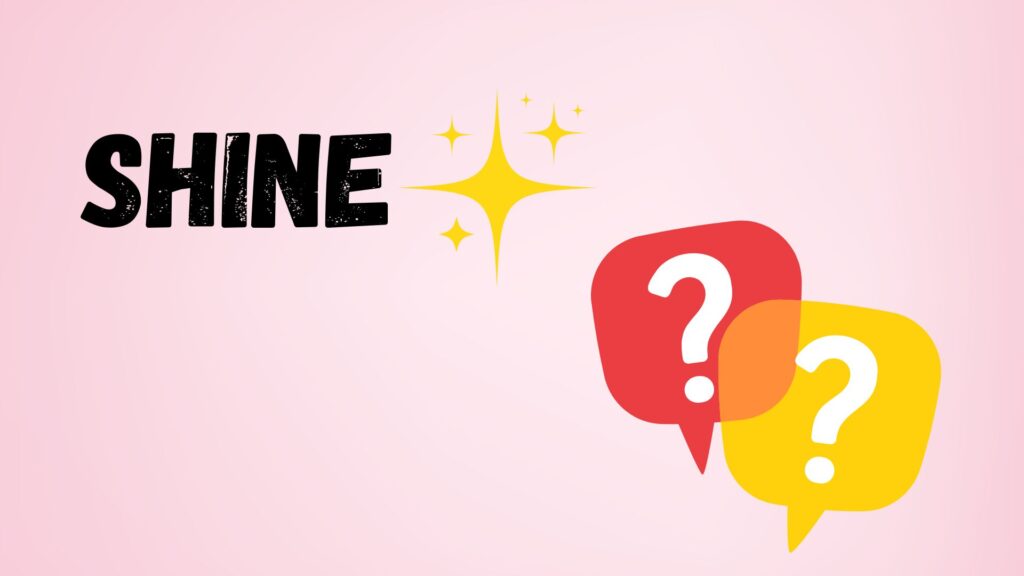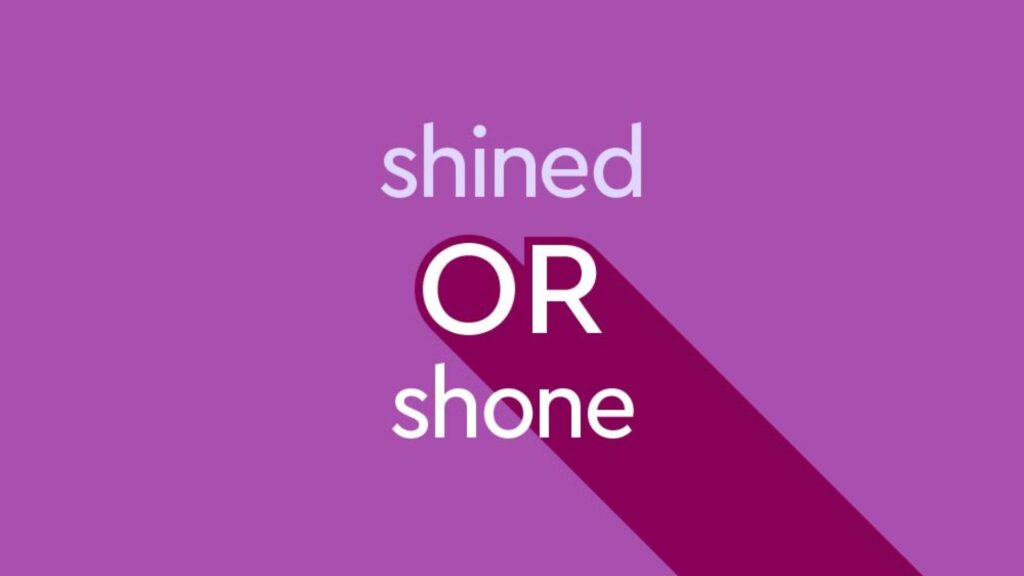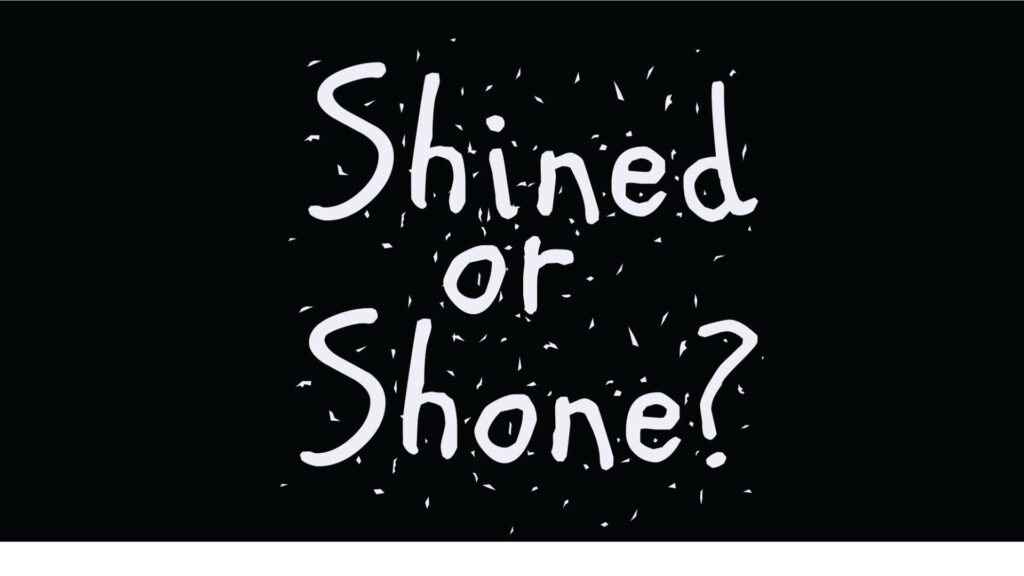Past tense of Shine
Ever stood under a glowing sunset and wondered, “Should I say the sun shined or the sun shone?” If so, you’re not alone. The verb shine is a grammar chameleon it takes on different forms depending on how it’s used. And yes, both shined and shone are grammatically correct but not always interchangeable.
Let’s break it down so you’ll never second-guess this again.
Understanding the Verb Shine

Before jumping into the past tense, let’s look at how shine functions in English grammar.
At its core, shine can be either a:
- Transitive verb: Requires a direct object
- Intransitive verb: Does not take a direct object
Why does this matter? Because the form you choose shined or shone depends on the sentence structure and whether or not there’s an object involved. When to Use Shone (Intransitive Past Tense)
When shine is used intransitively that is, when it describes something emitting light by itself you’ll want to use shone as the past tense.
✔ Correct Usage:
- The stars shone brightly last night.
- The light shone through the stained-glass window.
- David has really shone in his new role.
These examples don’t have a direct object following the verb. The subjects are doing the shining, and that’s enough.
✉️ Example Email:
Subject: Great Work on the Presentation!
Hi David,
Just wanted to say you really shone during yesterday’s pitch meeting. Your clarity, confidence, and visuals were spot on. Keep up the excellent work!
Cheers,
Rebecca Sanders
Notice how “shone” feels more natural and expressive here? That’s because it emphasizes David’s performance without an object being affected.
When to Use Shined (Transitive Past Tense)
Now, when you’re shining something, like a flashlight or shoes, then shined is the correct choice. That’s because shine becomes a transitive verb it’s doing something to something else.
✔ Correct Usage:
- She shined her necklace until it sparkled.
- I shined the flashlight under the bed.
- He had shined all the windows before the guests arrived.
In each case, the verb shine has a direct sentence object: necklace, flashlight, windows.
✉️ Example Email:
Subject: Quick Update on Housekeeping
Hi Mr. Leonard,
Just a heads-up Marco shined the hallway floors this morning. They’re spotless and polished. You might want to wear socks to avoid sliding around!
Best,
Tasha R.
Here, shined works perfectly because it describes a deliberate action on an object (the floors).
Still Confused? Think of It This Way:

Here’s a cheat-sheet that works nearly every time:
| Usage Type | Correct Past Tense | Example |
|---|---|---|
| Intransitive | shone | The moon shone all night. |
| Transitive | shined | He shined the headlights. |
If the verb affects an object directly, go with shined. If it simply describes light or brilliance coming from something, then it’s shone.
Grammar Breakdown – Why Two Past Tenses?
This isn’t just a fluke of modern English. The duality of shined vs. shone has roots in Old English and Proto-Germanic, where strong verbs like shine developed irregular past forms over time. Shone comes from the older, more traditional structure.
However, modern usage especially in American English has embraced shined for its simplicity, especially in action-heavy or object-related contexts.
Let’s Talk Tenses (Because Grammar Matters)
Here’s how the verb shine changes across English verb tenses:
| Tense | Verb Form | Example |
|---|---|---|
| Present | shine / shines | She shines in every interview. |
| Present Participle | shining | The sun is shining today. |
| Simple Past (Intransitive) | shone | The candle shone softly. |
| Simple Past (Transitive) | shined | He shined the glass. |
| Past Participle (Intransitive) | shone | They have shone in the finals. |
| Past Participle (Transitive) | shined | She had shined her shoes. |
This verb conjugation is a great example of how English verb tenses often play by multiple rules at once especially with irregular verbs.
Real-Life Usage in Popular Media
Writers and journalists often make stylistic choices between shined and shone depending on tone and rhythm. For instance:
“The spotlight shone on her face.” – A poetic choice that adds elegance
“He shined the trophy until it gleamed.” – A direct, action-packed sentence
These choices aren’t about grammar correctness they’re about stylistic grammar choices. Both are technically right. The difference lies in intent and structure.
Final Tip – Don’t Overthink It
If you’re still unsure whether to say shined or shone, just ask yourself this:
Am I talking about light coming from something? Or about someone shining something else?
Let that answer guide your verb form.
Recap – Know When to Use Shined or Shone

Here’s a quick recap for clarity:
- Use shone when describing light emitted from something (intransitive).
- Use shined when describing an action done to something (transitive).
- Both forms are correct, depending on sentence structure.
- Check whether there’s a direct object to guide your choice.
Bonus: A Few Fun Sentences for Practice
Try spotting the right verb form in these:
- The diamond shone like fire under the light.
- He shined his boots for the inspection.
- She has shone ever since she transferred schools.
- They shined the old lantern and used it again.
- The full moon shone through the mist.
All good? Now try writing your own!
Final Thoughts
Learning when to use shined or shone might seem tricky at first, but it’s all about context and sentence structure. By understanding the difference between transitive vs. intransitive verbs, and using grammar cues like sentence object and verb usage in context, you’ll shine (and not shined) as a confident English speaker.

